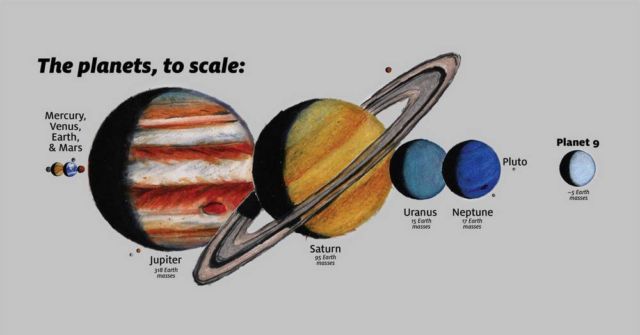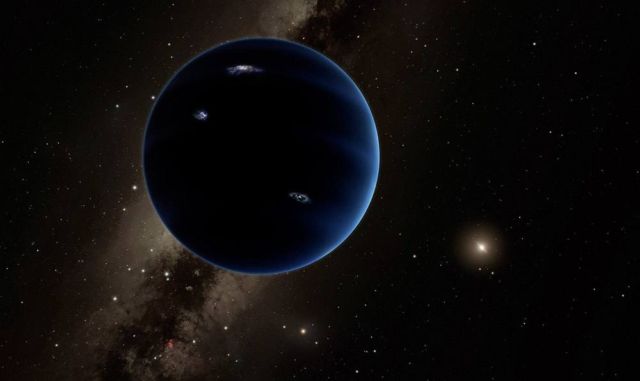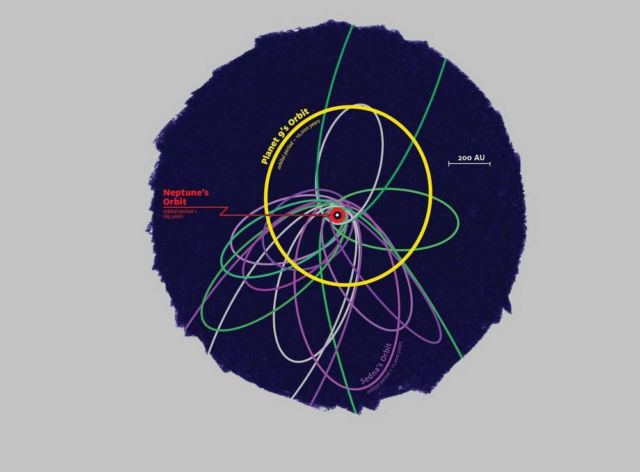Three years after hypothesizing of a Ninth Planet in the solar system, the researchers behind the theory present further arguments in favor its existence.
Caltech’s Mike Brown and Konstantin Batygin are publishing a pair of papers analyzing the evidence for Planet Nine’s existence.
Above, image credit James Tuttle Keane/Caltech
The papers offer new details about the suspected nature and location of the planet, which has been the subject of an intense international search ever since Batygin and Brown’s 2016 announcement.
Image credit James Tuttle Keane/Caltech
The first, titled “Orbital Clustering in the Distant Solar System,” was published in The Astronomical Journal on January 22. The Planet Nine hypothesis is founded on evidence suggesting that the clustering of objects in the Kuiper Belt, a field of icy bodies that lies beyond Neptune, is influenced by the gravitational tugs of an unseen planet.It has been an open question as to whether that clustering is indeed occurring, or whether it is an artifact resulting from bias in how and where Kuiper Belt objects are observed.
Mike Brown, the Richard and Barbara Rosenberg Professor of Planetary Astronomy, said:
“Though this analysis does not say anything directly about whether Planet Nine is there, it does indicate that the hypothesis rests upon a solid foundation.”
This illustration depicts orbits of distant Kuiper Belt objects and Planet Nine. Orbits rendered in purple are primarily controlled by Planet Nine’s gravity and exhibit tight orbital clustering. Green orbits, on the other hand, are strongly coupled to Neptune, and exhibit a broader orbital dispersion. Credit: James Tuttle Keane/Caltech
source Caltech








Leave A Comment